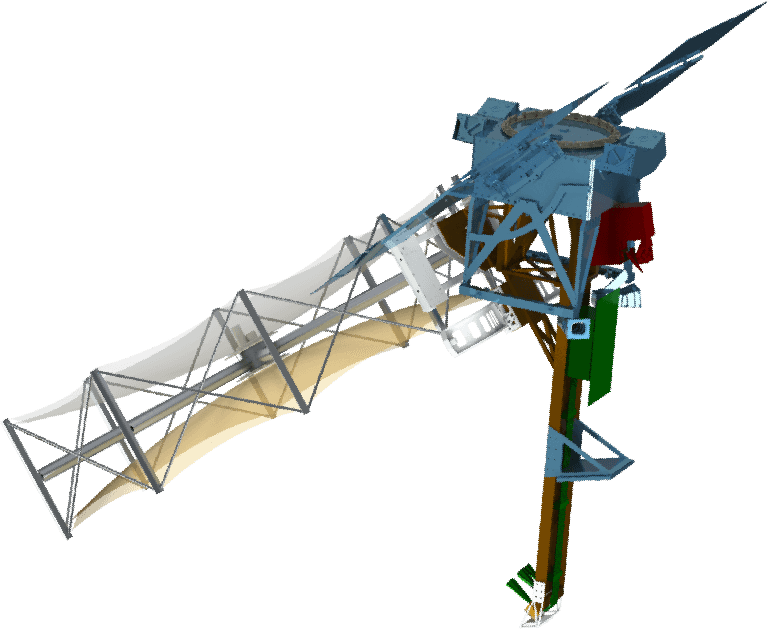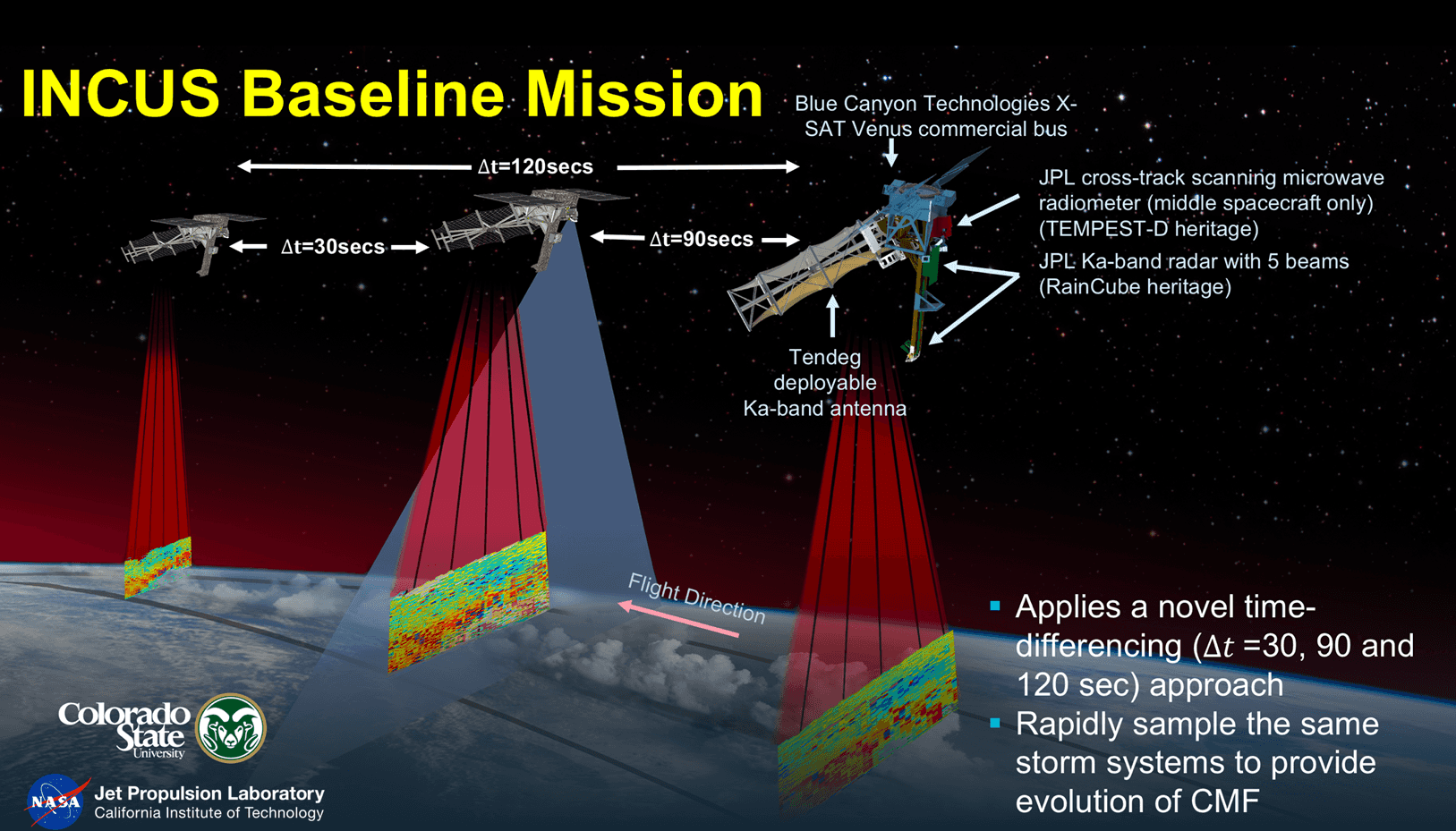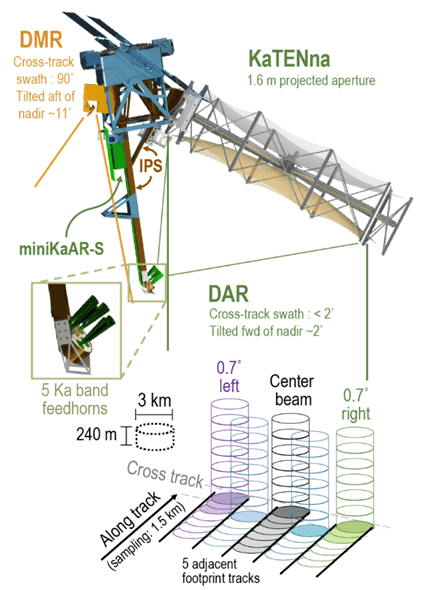INCUS Mission Plan and Instruments
INCUS is made possible by small size and low power consumption to support three low-cost SmallSats with advanced active and passive measurements of cloud dynamics in the global tropics.
- Strong Heritage: Successful technology demos by NASA's Earth Science and Technology Office (RainCube and TEMPEST-D instruments) will be flown together on INCUS for the first time on one platform, thereby capitalizing on their combined capabilities to obtain simultaneous observations of the internal storm structure, rapidly evolving convective mass flux and updraft dynamics, and anvil cloud properties.
- Series of three SmallSats: Three SmallSats will be flown in close succession with three time intervals (30, 90, and 120 seconds) will be used to apply a novel time-differencing approach to estimate convective mass flux in tropical convective storms for the first time.
- Instruments: Three RainCube-like Ka-band radars (one on each SmallSat) and one TEMPEST-D-like radiometer (middle SmallSat only) provide both active and passive remote sensing observations of rapid changes in convective cloud depths and intensities across the global tropics.

Anticipated Basic Specifications

Target Launch Date: October 2026
Mission Duration: 2 Years
| Inclination | Tropical (anticipated inclination between 22.5° and 39°) |
| Speed | ~7 km s-1 |
| Orbit Duration | ~95 minutes |
| Orbits per Day | ~15 |
| Instruments | Three scanning Ka-band radars, one scanning radiometer |
| Science Data | Convective mass flux, 3D reflectivity, 5 passive microwave channels |
| Spatial Resolution | Ka-band radar: ~3.1 km; Radiometer: ~16 km |
| Observational Coverage | All longitudes, with latitudinal coverage dependent on inclination |
| Mass | ~100 kg |
| Power | ~190 Watts |
| Data Rate | Up to 2.2 Gb per day (per space craft) |
Anticipated Instrument Performance
Ka-Band Radars
| Horizontal Resolution | ~3.1 km |
| Vertical Resolution | ~240 m |
| Radar Sensitivity | ~12 dBZ |
| Swath Width | ~9 km |
| Instrument Weight | ~7 kg |
Radiometer (one satellite only)
| Frequencies | 87, 165, 174, 178, 181 ± 0.5 GHz |
| Horizontal Resolution | ~16 km |
| Swath Width | ~1000 km |
| Instrument Weight | ~3.8 kg |
